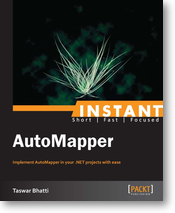👋 Hi there! In this video, Me & Hatim Nagarwala talk about Azure API Management, a powerful platform for managing APIs across different environments, whether they are on-premises, cloud, or hybrid 🌐. Azure API Management helps you with the entire API lifecycle, from design to deployment to monitoring 🚀. You will also discover some of the amazing features and benefits of Azure API Management, such as the management plan, the developer portal, and the integration with other services 🙌. Plus, you will see a live demo of how to use Azure API Management and get some useful resources to learn more about it 📚. Don’t miss this opportunity to explore Azure API Management and see how it can transform your API strategy 💯.
Summary of How to Manage Your APIs with Azure API Management
APIs are the building blocks of modern applications, enabling communication and data exchange between different services and devices. However, managing APIs can be challenging, especially when you have to deal with security, scalability, performance, and documentation. That's why you need a service that can help you manage your APIs effectively and efficiently.
In this blog post, we will introduce you to Azure API Management, a service that helps you manage internal and external APIs, exposing them to end-users, applications, and devices. We will also show you how to use its components and features, and how it can benefit your business scenarios.
What is Azure API Management?
Azure API Management is a service that helps you create, publish, secure, and monitor your APIs. It allows you to expose your APIs to different audiences, such as developers, customers, or partners, and provide them with a consistent and reliable experience. Azure API Management also helps you manage the lifecycle of your APIs, from design to deployment, and from testing to production.
Azure API Management consists of three main components: the management pane, the developer portal, and the API gateway.
The Management Pane
The management pane is present on the Azure portal and is used to manage APIs, authentication, and other settings. You can use the management pane to:
- Import or create APIs from various sources, such as OpenAPI, WSDL, or Azure services
- Configure policies, such as authentication, caching, rate limiting, or transformation, to control the behavior and performance of your APIs
- Define products, groups, and subscriptions to organize your APIs and control access to them
- Monitor the health and usage of your APIs using metrics and logs
- Troubleshoot issues and errors using diagnostics and alerts
The Developer Portal
The developer portal can be exposed to end-users or app developers, allowing them to view API definitions, onboard APIs, and access them. You can use the developer portal to:
- Provide a user-friendly and customizable interface for your API consumers
- Publish interactive API documentation and code samples
- Enable self-service registration and subscription to your APIs
- Collect feedback and ratings from your API consumers
- Support multiple languages and currencies
The API Gateway
The API gateway is the endpoint pane where all applications, devices, and services can access the APIs. You can use the API gateway to:
- Route requests to the appropriate backend service or API
- Enforce policies and security measures on the incoming and outgoing requests
- Scale your APIs to handle high volumes of traffic
- Optimize your APIs for performance and reliability
- Integrate your APIs with other Azure services, such as Application Insights, Event Grid, or Service Bus
How to Use Azure API Management?
Azure API Management can be used in various scenarios, including cloud migration, cloud-native applications, IoT solutions, big data platforms, and digital transformations. Here are some examples of how you can use Azure API Management to enhance your business processes and outcomes:
- Cloud Migration: If you are migrating your existing applications or services to the cloud, you can use Azure API Management to expose them as APIs and make them accessible to your cloud-based or hybrid applications. You can also use Azure API Management to modernize your legacy systems and integrate them with new technologies and platforms.
- Cloud-Native Applications: If you are developing cloud-native applications using microservices or serverless architectures, you can use Azure API Management to manage and orchestrate your APIs and services. You can also use Azure API Management to implement best practices, such as versioning, revisions, and testing, to ensure the quality and consistency of your APIs and services.
- IoT Solutions: If you are building IoT solutions that involve connecting devices and sensors to the cloud, you can use Azure API Management to manage and secure your IoT APIs and services. You can also use Azure API Management to enable communication and data exchange between your devices and other cloud services, such as Azure IoT Hub, Azure Stream Analytics, or Azure Machine Learning.
- Big Data Platforms: If you are creating big data platforms that involve processing and analyzing large volumes of data, you can use Azure API Management to expose your data sources and analytics as APIs and services. You can also use Azure API Management to enable data ingestion and consumption by your applications and devices, as well as by your partners and customers.
- Digital Transformations: If you are undergoing digital transformations that involve transforming your business models and processes, you can use Azure API Management to create and monetize new APIs and services. You can also use Azure API Management to enable innovation and collaboration by exposing your APIs and services to your internal and external stakeholders, such as employees, customers, or partners.
How to Learn More About Azure API Management?
If you want to learn more about Azure API Management, you can check out the following resources:
- Microsoft Learn: You can find various learning modules and paths that cover the basics and advanced topics of Azure API Management, such as creating and securing APIs, configuring policies and products, and monitoring and troubleshooting APIs.
- Microsoft Docs: You can find comprehensive documentation and tutorials that guide you through the features and functionalities of Azure API Management, such as importing and creating APIs, managing the developer portal, and integrating with other Azure services.
- Microsoft Q&A: You can find answers to your questions and issues related to Azure API Management, or post your own questions and get help from the community and experts.
- Microsoft Feedback: You can provide feedback and suggestions to improve Azure API Management, or vote for the existing feedback and ideas from other users.



Leave A Comment